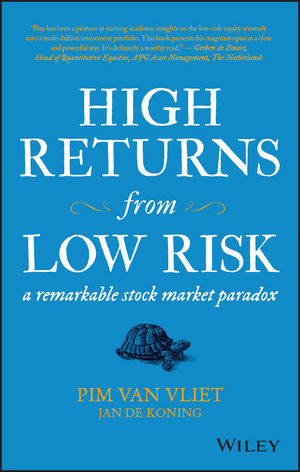We all know that higher returns come at the cost of higher risk. This is one of the basic fundamentals of investing.
But what if it isn’t true?

In High Returns from Low Risk: A Remarkable Stock Market Paradox, Pim van Vliet and Jan de Koning challenge this assumption and find that, in fact, high-risk (i.e. high-volatility) stocks actually underperform their more conservative, staid peers. Van Vliet and de Koning found that, over the past 86 years, a portfolio of the least volatile stocks (lowest decile) outperformed a portfolio of the most volatile stocks (highest decile) with annualized returns of 10.2% and 6.4%, respectively.
Van Vliet and de Koning are anomaly hunters, and I would include them among the growing evidence-based “smart beta” movement that seek to build a better mousetrap than traditional cap-weighting indexing.
It would be easy enough to stop here and suggest that Van Vliet and de Koning’s advice was simply to buy and hold low-volatility stocks. (You could argue that this is essentially what Warren Buffett’s strategy at Berkshire Hathaway has been for the past several decades, buying a leveraged low-vol portfolio with insurance float.) But Van Vliet and de Koning take the analysis a step further, incorporating value and momentum strategies into the mix.
Van Vliet and de Koning suggest using a combination of dividend yield and buyback yield (collectively called “shareholder yield” in certain cases, though Van Vliet and de Koning do not use that phrase in the book) to screen for value. But as a way of avoiding value traps — stocks that are cheap for a reason — they also suggest using a momentum filter. In plain English, they look to avoid cheap stocks that just keep getting cheaper.
As for why these anomalies persist, Van Vliet and de Koning have their theories. The need by professionals to hug their benchmarks, excessive short-termism by both professional and retail investors and low-volatility stocks’ overall lack of sex appeal are all factors.













Leave A Comment